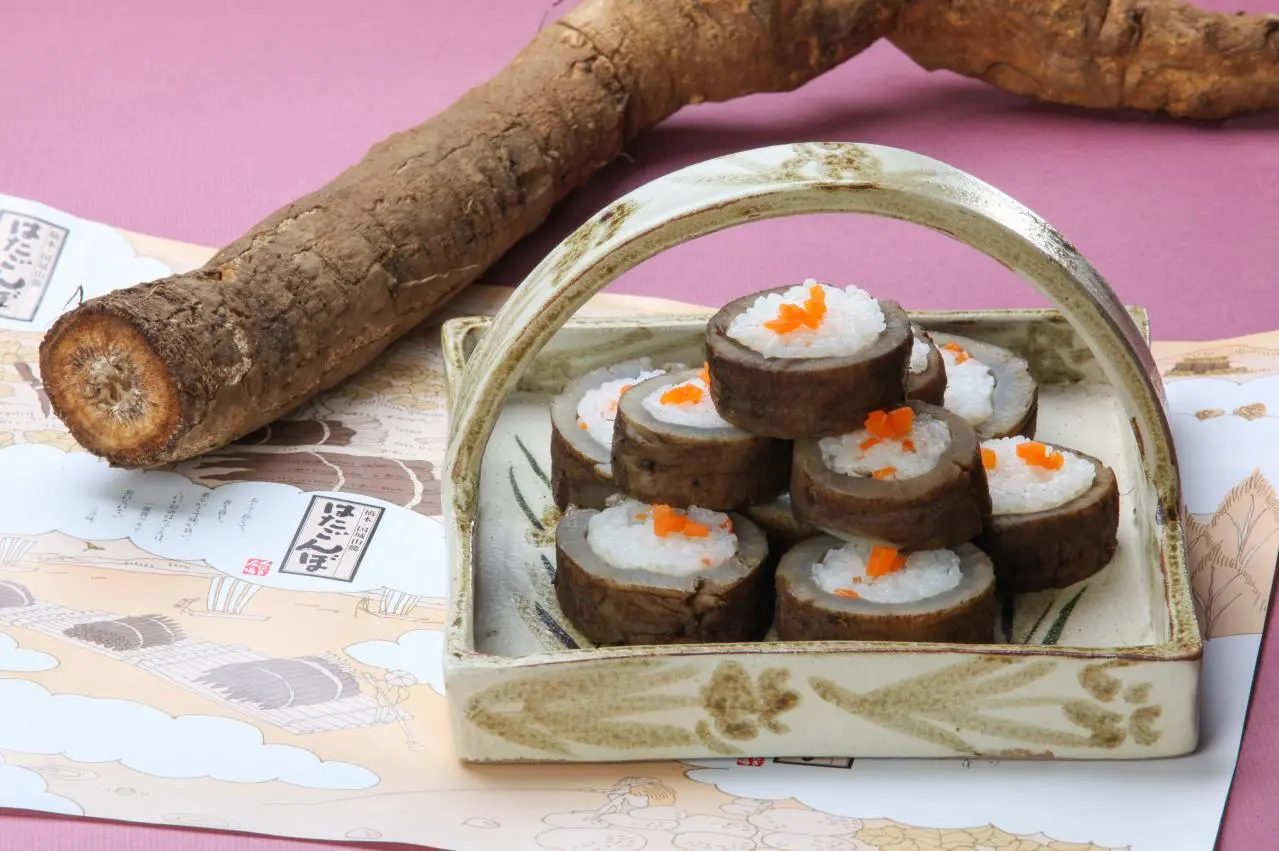Hatagonbo Sushi
A unique creation showcasing the thickness of Hatagonbo burdock
Hatagonbo Sushi introduction
Hatagonbo Sushi (はたごんぼずし, Hatagonbo sushi) features "Hatagonbo," a special variety of burdock grown in the Nishihata area of Hashimoto City, located on the slopes of Mount Kunijo at an elevation of 552 meters. The name "Hatagonbo" comes from combining "Hata" (Nishihata) and "Gonbo," a local dialect word for burdock. Though it is not a special breed, burdock cultivated in the tough red clay and steep slopes of this region develops into impressively thick roots. These burdocks can reach diameters of 5 to 10 cm and lengths of about 1 meter. Harvesting was traditionally labor-intensive, requiring farmers to dig more than one meter into the sticky soil using long hoes, sometimes taking 20 to 30 minutes to unearth a single root. This was so demanding that a local saying once went, "Don’t marry off your sons to Nishihata," highlighting the effort involved. Despite this, Hatagonbo burdocks are rich in dietary fiber and polyphenols compared to standard varieties, with a tender texture and aromatic taste. They have historical connections to the tradition of "Zatsuji Nobori," where villages at the foot of Mount Koya offered rice and vegetables to the temple complex, a practice dating back to the Edo period and continuing sporadically until the early Showa era. Revived by the local cooperative in 2014, Hatagonbo continues to hold cultural significance. Hatagonbo is traditionally sown in spring and harvested in November. Hatagonbo Sushi, an original creation by the local cooperative, consists of thick burdock slices hollowed out and filled with vinegared rice. Beyond this specialty, various recipes have been innovated, including Hatagonbo croquettes, inarizushi, and even Hatagonbo tea, showcasing the versatility of this remarkable ingredient.
Other information
Wakayama Other recommended dishes
Sushirelated dishes
Kind of food
Tenpura Sushi Ramen Seafood Soba & Udon Okonomiyaki & Takoyaki Bento & Onigiri Don dish Nabe dish Yakitori & Kusiyaki Meat dish Local cuisine